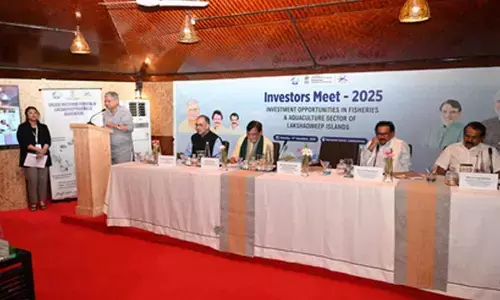Protecting Your Eyes: Understanding Conjunctivitis and Preventive Measures During Seasonal Outbreak

Representational image
Conjunctivitis or pink eye is a seasonal infection affecting the front portion of the eyeball
Madras eye was the name given by the colonial British doctors stationed in Madras as it was rampant during the humid and hot summers. Adenovirus is the agent causing the infection and it may be preceded by a mild sore throat and cold.
It spreads rapidly in areas which are thickly populated and in organisations where there is crowding in the work space. Public spaces and public transports are also areas of rapid spread of the virus. Dr Shibu Varkey MS, DO, DNB, FRCS(UK)
Regional Medical Director, Maxivision Superspeciality Eye Hospital, Tiruchirapalli, says, “The tears and eye secretions of the infected person are the source of spread of the infection and hands are means of transmitting it to one’s eyes.”
Watering, irritation, mild discharge and redness are the main symptoms, though in severe cases there maybe swelling of eyelids and pain around the eye and also at a point in front of the ear due to lymph node enlargement.
In some cases, infection may spread to the cornea (keratitis), causing blurring of vision or glare and haloes at night.
Normally it’s self-limiting infection and clears in a week or two, though in rare cases the keratitis may persist for months or years. Being infected does not offer resistance to future infections as there are multiple subtypes of the virus, so it is possible for same individual to get infected multiple times. The only sure shot way to prevent spread of infection is to avoid ‘hand eye contact’. Whenever the eye has to be touched the hands must be washed or sanitized first. Infected persons leave the virus wherever they touch with their contaminated hands, others who happen to touch the same spot transfer the eye infection to own eyes by rubbing their eyes with contaminated hands.
Isolation of the infected persons and having separate utensils, soap, towels, pillows can help limit the spread.
There is no effective treatment for the infection, and mostly it’s supportive, however usage of steroid eyedrops for rapid symptomatic relief should be avoided as it can lead to keratitis and prolongation of the course of the disease.
Diabetics and people with low immunity may have a prolonged and complicated course of illness.
Avoid crowded spaces, avoid hand eye contact, frequently wash or sanitize hands, avoid sharing personal items, these should help one sail through this season without contracting Madras eye.
Don’ts
1. Avoid crowded spaces.
2. Never rub or touch eyes without washing hands.
3. Never share towels or personal items used for facial hygiene.
4. Don’t use steroid eyedrops for treating the infection.
Do’s
1. Frequently wash hands.
2. Use sanitizer after touching common areas like taps, flushes, door handles, etc.
3. Use protective eye gear like goggles to prevent touching one’s eyes.
4. Diabetic patient should keep sugar levels under control.
5. Maintain good personal hygiene.

















